Announcer:
The following program is a PBS Wisconsin original production.
Flood victim:
This is where the water was.
Frederica Freyberg:
Residents sort through the wreckage after some of the worst rain and flood events swept through southeast Wisconsin, leaving a path of destruction in its wake.
I’m Frederica Freyberg. Tonight on “Here & Now,” Milwaukee County Executive David Crowley gives the latest on flood recovery. And an expert explains how to know if you’re insured for flood damage. A report on how MPS is doing containing lead paint in schools, and what to expect for next year’s marketplace premiums. It’s “Here & Now” for August 15.
Announcer:
Funding for “Here & Now” is provided by the Focus Fund for Journalism and Friends of PBS Wisconsin.
Frederica Freyberg:
Communities across Wisconsin were hit with severe weather, with record floods hitting the Milwaukee area. As the state awaits word on any federal aid, those on the ground got to work doing what they could.
Jonathan Horton:
I woke up in the middle of the night, about 3 a.m. Something just told me to check the basement. As soon as I got down there, my worst nightmare.
Frederica Freyberg:
Milwaukee and Waukesha County residents experienced a living nightmare.
Jonathan Horton:
When I got down there, I was checking the water drain and water was just gushing out of it. You know, I tried to put pressure on it, like it was an open wound or something.
Frederica Freyberg:
As two days of rainfall led to historic flooding. The deluge of water overwhelmed storm drains, caused flash floods, knocked out power, damaged homes, submerged cars and crumbled roads. No deaths have been reported to have been caused by flooding. During the intense rainfall, some areas experienced 10 to 13 inches of rain in a matter of hours, categorizing it as a 1,000-year flood, a record for the area, second only to flooding in 2008. Governor Tony Evers called it “unprecedented” and declared a state of emergency for flash flooding and storm damage across the state. The governor also requested FEMA support as Wisconsin Emergency Management said an initial state and local damage review suggests Wisconsin meets the threshold for federal aid. A formal presidential declaration is needed before any federal assistance will be provided. But there’s some damage, financial aid won’t fix.
Jonathan Horton:
My father had recently passed, and I had all of his boxes down in the basement, so a lot of memories got washed away. It was pretty bad.
Frederica Freyberg:
Milwaukee County Executive David Crowley declared his own state of emergency on Sunday as the scope of the flooding was immediately evident. At week’s end, David Crowley joins us for what’s happening now and what’s next. And thanks very much for being here.
David Crowley:
Thank you for having me, Frederica, always a pleasure.
Frederica Freyberg:
So now, just under a week since these torrential rains and flooding, what is happening in Milwaukee right now, in the aftermath?
David Crowley:
Well, we’ve had an opportunity to talk to many different neighbors and businesses, and a lot of them are facing a lot of devastation and really heartbroken as far as what this severe weather has done to them. And so right now, we are in the recovery mode. And so we have damage assessment teams working in conjunction with not only our local officials, but as well as the Wisconsin Emergency Management. And our job is to make sure we do this analysis, report that damage. Hopefully we’ll be getting that preliminary data done today. We’ll be then turning that over to the Wisconsin Emergency Management System to see if we can get a FEMA declaration. I’ve heard that they may be coming as soon as next week. More to hear on that. But when they’re here, that gives them an opportunity to do an analysis of our damage report and for them to actually tour and see the damage themselves before making a declaration.
Frederica Freyberg:
What is the scope of the damage? Do you know yet? Do you have kind of a ballpark dollar damage figure?
David Crowley:
Well, when you think about a 1,000-year flood, it could create a lot, of lot of damage, right? Thousand-year rain storm coming into our community. And so far, we’ve had the opportunity to actually assess over 2900 different levels of properties. And we see a lot of properties who have either major damage or completely destroyed. And so we know that when it comes down to our public infrastructure, it exceeds $23 million to date at this moment. And so as we continue to do these damage assessments, we’re just asking for the public’s patience, to contact 211 as much as possible to report that damage so we can give an accurate assessment.
Frederica Freyberg:
What was worst hit?
David Crowley:
You know, I don’t think — you know, when we talk about Milwaukee County, I would say what was worst hit is, is our pride. You know, this is something that we never really understood was coming our way. But when you see what has happened in Greenfield, what has happened in West Allis, city of Milwaukee, including Wauwatosa, there’s a lot of damage. And we’ve also heard about other communities outside of Milwaukee County who’ve also faced a certain level of damage. And so it is our hope that we will be able to receive some level of FEMA assistance compared to what we’ve seen out there with my own eyes, I do think that we’ve reached that threshold for a presidential declaration.
Frederica Freyberg:
How are residents coping?
David Crowley:
You know, residents are doing everything that they can. Many are heartbroken. But I’ve also seen many folks who — whose spirits are still high. And I’m glad to see folks helping out. I’ve been going to different neighborhoods, seeing neighbors helping neighbors. Businesses really stepping up. But what this community really needs is for their neighbors, you know, folks from all across the state to really come down and assist with the cleanup, helping us to get to those recovery efforts, getting to that place of normal as much, as much as we can and as quickly as possible. But I want folks to know that, you know, our spirits aren’t broken. You know, we are strong and resilient Milwaukee County, and we’re going to do everything that we can to not only recover, but to rebuild the best way possible.
Frederica Freyberg:
You’re kind of putting a call out for people to come to help. Is there enough help on the ground?
David Crowley:
You know, when you’re, when you’re talking about the level of devastation and not just the physical damage, but the psychological damage that this can have, you know, we need as much help as possible, right? I mean, there are so many seniors, people with disabilities who still haven’t been able to clean out their basements and still have, you know, severe damage in their, in their basements. But you also have individuals who have lost, you know, their foundation completely and, you know, have close to three feet of mud and water still in their basements and needing the help to clean those things up. And so we do need as much help as possible. We’re asking folks to not only contact the Red Cross to, to provide some level of assistance, but we do have our website – county.milwaukee.gov/2025floodresources – where individuals can sign up to create their own volunteer teams to go out and help individuals.
Frederica Freyberg:
Are you optimistic that FEMA will deliver federal disaster aid here?
David Crowley:
You know, I am hopeful that they will be able to give us that federal declaration. When you think about the level of damage, again, $23 million in public infrastructure alone and seeing homes who are already being quoted $100,000 in order to rebuild to the, to the magnitude that they feel comfortable with. I mean, that’s quite extreme. And we know that, you know, insurance isn’t going to cover everything for individuals. And so if we want to bring back individual assistance and be able to rebuild the best way possible, that declaration is going to be extremely key moving forward. And so I’m grateful for Governor Evers and making the state declaration. And so hopefully we’ll be seeing that at the federal level soon.
Frederica Freyberg:
Milwaukee County Executive David Crowley, thanks very much and good luck.
David Crowley:
Thank you so much for having me.
Frederica Freyberg:
Property loss due to flooding like what happened in Milwaukee is likely not covered by the standard homeowner’s insurance policy. It would be covered up to a point under flood insurance. But according to the state Insurance Commissioners Office, Wisconsin has one of the lowest number of flood insurance policies in the nation, at under 11,000 of more than 2.7 million households. Our next guest researches flood insurance costs and benefits as assistant professor in the Risk and Insurance Department at the Wisconsin School of Business. Philip Mulder joins us now. And thanks for being here.
Philip Mulder:
Thank you, Frederica. Happy to be here.
Frederica Freyberg:
So what’s the explanation for why so few people hold flood insurance? Do they not know that they need it?
Philip Mulder:
I think that it’s a variety of cases. You know, on the one hand, especially in a state like Wisconsin, where we’re not used to thinking of floods as a regular risk, a lot of people don’t do the due diligence that you would need to discover that your homeowner’s insurance policy doesn’t cover that peril, right? You may be told that as you buy the policy, but maybe you forget over time, or you don’t notice as you’re kind of finalizing the details. In other cases, maybe people do know that flood isn’t covered, but it is an extra cost. It can be on the low end, you know, $300, $400 a year. On the high end, if you are in a high-risk area, maybe even thousands of dollars a year. For a lot of households that’s outside of their immediate budget, especially if flooding isn’t top of mind as a, as a potential risk.
Frederica Freyberg:
Certainly top of mind right now, right after what happened in Milwaukee. But I put a Milwaukee address that did experience flood damage into the flood risk calculator, and it came out as low risk. Are flood maps accurate and have they changed recently? Do they change a lot?
Philip Mulder:
The information that we have about flood risk can often be, I think, confusing to the typical household. It’s sort of important to break down what might be out there. On the one hand, you have sort of what we’ve always called flood maps, which are made by FEMA, and those can often be out of date. These are updated over time by the U.S. Army Corps of Engineers through studies. But that process can — is supposed to be done every five years, but often flood maps can be more than a decade out of date. Even when they are updated, they don’t always do a rigorous study. So, so yes, that information is often out of date. Even if you’re not in an official floodplain, your home may have substantial risk. The National Flood Insurance Program is using newer information now to price policies based on risk rating 2.0, but that can be very difficult for homeowners to learn about. So sometimes you’ll see information on the flood map that tells you you’re low risk. And another set of information may be telling you that you’re high risk.
Frederica Freyberg:
And so what should the homeowner do?
Philip Mulder:
Well, you know, it’s important to sort of take a holistic view of everything that you can do to learn about your risk. There’s also third-party tools out there, like First Street Foundation. I understand that the end of the day, this probably seems like throwing even more information at the home owner. I think looking into what the NFIP is charging you, this is the National Flood Insurance Program. You know, that premium is based off of their best estimate of your risk. If you’re being charged a high premium, it’s probably because you have high risk.
Frederica Freyberg:
And it seems to me that some people might explain away risk in Wisconsin by saying what happened in Milwaukee was a 1000-year flood. It’s not going to happen again.
Philip Mulder:
Well, you know, I mean, a 1 in 1000 chance of having your home ruined is a substantial risk, right? That’s what flood insurance and insurance in general is for, is to take something that yes, it’s unlikely, but if it were to happen, could be catastrophic. And to, and to, you know, get insure against that. The other thing too is, you know, when we talk about things like 1000-year or a 100-year flood, that’s a very tricky concept to wrap our heads around. It does not mean that this will only happen once every thousand years. There’s 1000-year floods every year somewhere in the country, right? And in addition, what is a 1000-year flood? That’s something that we can only estimate and that we think is changing with changing weather patterns.
Frederica Freyberg:
So if you buy a flood insurance policy, maybe you’re not even in a high-risk area, but maybe you just want to be covered. Does that then cover for replacement, or are they all different?
Philip Mulder:
You are probably going to be able to find some different types of coverage on the market. So, you know, I’ve thrown out the term NFIP, the National Flood Insurance Program, that is a federally run insurer, and they are the primary provider of flood insurance in the United States and including Wisconsin. They will sell you up to $250,000 of coverage. A lot of homes that will not cover the full replacement cost, but for some of the smaller floods, maybe primarily affect the lower levels of a home, which, which are more typical in Wisconsin, you might be able to get enough coverage. Now, there’s also private providers of flood insurance, and there you might be able to find more coverage options and things that can cover more expensive homes. It’s always important to talk things through with an agent or a broker, understand differences between actual cash value, replacement cost value policies. You know, these, these can definitely be tricky concepts.
Frederica Freyberg:
So given torrential rain events that are on the increase, should we all just assume that we need flood insurance?
Philip Mulder:
You know, it’s — I think it’s a decision that every household has to make for itself. What I hope is that people can go in with full information. I think that often people assume that they have low risk because they’re not in a floodplain. That’s not always going to be true. People will say things like, “Oh, I can’t get flood insurance. I’m not in a floodplain.” That’s not true. The National Flood Insurance Program will sell flood insurance in almost every community as a participating NFIP community, that means you can buy flood insurance inside or outside of the floodplain. So people should understand their options. Now there’s other steps you can take: sump pumps in your basement, elevating homes that are near waterways, keeping a buffer of savings. If you only face small, say, basement damages, you know, these are other tools that homeowners can use to handle flood risk. But flood insurance is definitely one of those tools, and households should take a look at their budgets and see if that makes sense.
Frederica Freyberg:
If you put a sump pump or other measures like that in your basement, does that reduce the cost if you buy flood insurance?
Philip Mulder:
Not in every case. And in addition, you know, some things are excluded through flood insurance policy. So basements in many cases, you might be on your own altogether, certainly for say, covering the contents down there. You know, flood insurance is really for dealing with the worst-case scenarios. I know that, you know, a $10,000 or $20,000 loss can be financially catastrophic to families, but ultimately, what flood insurance is for is even bigger losses, potentially the kind of flooding that could ruin your entire home.
Frederica Freyberg:
Wow. Well, Philip Mulder, thank you. Thank you so much for the information.
Philip Mulder:
Thank you. It was my pleasure.
Frederica Freyberg:
As another school year quickly approaches, we have an update on lead contamination in Milwaukee Public Schools. “Here & Now” reporter Steven Potter has this report.
Brenda Cassellius:
So they’ll come back before school starts and make sure that they get every single spot and it’s just a constant upkeep.
Steven Potter:
Brenda Cassellius is the superintendent of the Milwaukee Public School system. Since her first day in the job, less than six months ago, she’s faced the daunting task of how to manage a significant health risk facing the school district’s more than 60,000 students. The problem is lead contamination, specifically chipping lead paint and lead dust and the extent of the problem is very widespread.
Brenda Cassellius:
So we have to assume that the schools built prior to 1950, when there was the understanding that there’s lead in paint happened, that those schools have lead in them.
Steven Potter:
Cassellius says the Milwaukee Public Schools were using lead paint until it was federally outlawed in 1978. That means a majority of schools are considered contaminated.
Brenda Cassellius:
That’s about 106 schools.
Steven Potter:
The lead crisis began when a student at the Golda Meir Elementary School tested positive for lead poisoning back in January. That’s when the City of Milwaukee Health Department got involved.
Mike Totoraitis:
We’re very concerned about developmental delays and cognitive regulation. So if a child has significant lead poisoning, it can cause behavioral issues and make them more impulsive, and it can cause permanent brain damage that has significant long-term effects. So this is why lead is regulated at the federal level and why we’re taking this so seriously here in the city.
Steven Potter:
Early last spring, after another MPS child tested positive for lead poisoning, the health department ordered the school district to come up with a lead abatement and management plan to address the most contaminated schools and the student populations most in danger of lead poisoning.
Mike Totoraitis:
The district was required to produce a lead plan to ensure that we could get back to compliance with the lead standards that are set forth for any school across the state of Wisconsin.
Steven Potter:
Around 600 students have been tested, Totoraitis says, and the testing of students continues.
Mike Totoraitis:
This is an ongoing effort that’s really going to span into the coming years to ensure that we keep eyes on the students at MPS and frankly, across the city.
Steven Potter:
Part of the school district’s new plan, released last April, included temporarily closing several schools and relocating the students to another school while cleaning and repainting was done. Over the spring and now through summer, school officials say they’ve made progress but still have dozens more schools to clear.
Brenda Cassellius:
We’re hoping that we’ll have our schools finished and tested by the September 2nd school start date.
Mike Totoraitis:
It’s a fluid process, so as we do our screenings and ensuring that the schools are ready to reopen, we’ve uncovered, “Hey, you actually need to reclean this room or you need to restabilize this surface” and that adds more time.
Steven Potter:
Despite all of their efforts so far, MPS officials say that there’s still a lot more work to do with cleaning and painting the schools to get them to a standard that’s safe for students. And once the schools are stabilized, additional maintenance and regular inspections will be needed to keep them that way.
Brenda Cassellius:
So far, we think it’s going to cost somewhere around $25 million to do. And then there’s the ongoing costs so we put in an additional $16 million of ongoing investments within our facilities department to add custodial support, to add painters, to add plasters, to add lead abatement or lead inspectors to the team to make sure that we’re keeping up with our lead action plan.
Steven Potter:
And those are costs that MPS is having to cover alone.
Brenda Cassellius:
We have not received any help from the state.
Steven Potter:
Still, some are concerned that not enough is being done fast enough or thoroughly enough to keep their kids safe. And one group wants more transparency about what’s being done. Shannon Pahlicek is a parent with Lead Safe Schools Milwaukee.
Shannon Pahlicek:
It shouldn’t have been a problem in the first place. It’s an issue of aging buildings is a big part of it, but it’s also an issue of deferred maintenance, which is, you know, a multifaceted problem. The administration’s job is to know what’s going on in the schools. And so the idea that there was, you know, as much degradation in the paint as there was and as much dust in the schools as there was, I think that’s, that’s disheartening. No child deserves to be unsafe on day one. So they’ve got to do what they’ve got to do. But the faster the better but you want it done right.
Steven Potter:
MPS Superintendent Cassellius says she understands the parents’ concerns.
Brenda Cassellius:
We’re working as fast as we can with all urgency and no expense spared. So I’ve told my team, if you need additional painters, we will buy them. If you need additional plasters, we will buy them. The only thing that I can’t give them more of is time. We are up against a deadline on September 2nd to get this work done.
Shannon Pahlicek:
You can’t make a mistake like this and then ask the public to just trust you. You have to be willing to build that trust by being completely transparent.
Steven Potter:
Regardless of how much cleaning and repainting is done. One fact remains that these schools still have decades of lead paint inside them. So the only way to truly eliminate this risk, MPS officials say, is to rebuild.
Brenda Cassellius:
I think that we need to do some either major renovations or new builds, and we need a significant 100-year plan in Milwaukee Public Schools. We have to make some hard decisions as a community about the investments we want to make in our children’s future.
Steven Potter:
Reporting from Milwaukee, I’m Steven Potter for “Here & Now.”
Frederica Freyberg:
In health care news, Affordable Care Act premiums are expected to increase sharply when people enroll starting in November. Insurance companies are making their projections now for 2026 rates. In Wisconsin, nearly 850,000 people are enrolled in ACA plans. 12 insurers across the state that offer marketplace plans, project increases ranging from 6.6% to 34.5%, according to health system analysts. What’s driving this increase? We turn to Caroline Gomez-Tom, an enrollment manager with the Covering Wisconsin program, which helps people sign up for marketplace plans. And thanks very much for being here.
Caroline Gomez-Tom:
Thanks for having me, Frederica.
Frederica Freyberg:
So when you saw these projected premium hikes, what was your reaction, especially to the like 34.5% increase?
Caroline Gomez-Tom:
Yeah, it was definitely a startling hike, except we weren’t necessarily surprised knowing that there were some things that were in the mix regarding enhanced premium tax credits that were going away or potentially going away. You know, Congress could still act in, you know, these several months before the end of the year and then some other policy changes that have happened at the federal level. Plus healthcare costs rising, inflation, etc., that could be a part of this. But to see the numbers that we are expecting for this year, it, it took, it took your breath away.
Frederica Freyberg:
Yeah. So these enhanced tax credits are due to expire at the end of 2025. How did those tax credits help with out-of-pocket costs?
Caroline Gomez-Tom:
Yeah. So these extended tax credits, they have been in place now since 2020 and essentially, they expanded, really, the discounts or the amount that people qualified for to lower their cost of insurance, especially for those folks that had slightly higher incomes. So that middle income range above 400% of the federal poverty level. And what that means is that people had more options to consider when they were looking at the healthcare.gov options. Instead of just going directly to the lowest costing bronze plan with a crazy out of pocket cost for an individual, they could actually shop around realistically and look at the plan that may cost a little more per month, but because of those extended premiums, they could afford it, but had also lower out of pocket costs for them.
Frederica Freyberg:
And so did those premium tax credits encourage a lot more people to actually enroll?
Caroline Gomez-Tom:
Absolutely and we can see that even just this last year where we hit a milestone year in enrollment. In Wisconsin, we had 313,000 people sign up, which was the highest we’d seen since the marketplace opened in 2014.
Frederica Freyberg:
So according to an analysis that we read, there are other drivers other than these enhanced tax credits of rate hikes, like the cost of health care itself, which you mentioned, including specialty drugs like Ozempic. What’s it like for people with ACA plans to see such swings in costs?
Caroline Gomez-Tom:
Yeah, I think it’s tough because we’re already talking about folks who otherwise don’t have access to another form of coverage. These are folks that don’t qualify for Medicaid. They usually do not have an option for health insurance through their employer. So they’re already going to healthcare.gov because there are limited options for them. And then without this additional financial assistance to help lower the cost of insurance. And sure, there still will be some tax credits for most folks, but there still will be some that really will get priced out of the marketplace. And that I — you know, that’s, that’s very difficult for folks to go without health coverage.
Frederica Freyberg:
So if someone is enrolling or re-enrolling for next year, what is your advice?
Caroline Gomez-Tom:
Well, I would say to start early, get connected with a health insurance navigator. Covering Wisconsin still has our navigator program and we will help people sign up for coverage through healthcare.gov. They can call 211. They can also reach us directly on WisCovered.com or our website – CoveringWI.org – to sign up for an appointment. And they need to shop around. And I normally would say they should shop around, but really this year, I think it’s a need to make sure that they understand all the options that are available to them so that they can make a sound choice, because what I don’t want to see are people just foregoing even going to healthcare.gov because they’re deterred by cost. We want people to at least know what their options are so they can make a sound decision.
Frederica Freyberg:
All right. Great advice. Caroline Gomez-Tom, thanks very much.
For more on this and other issues facing Wisconsin, visit our website at PBSWisconsin.org and then click on the news tab. That’s our program for tonight. I’m Frederica Freyberg. Have a good weekend.
Announcer:
Funding for “Here & Now” is provided by the Focus Fund for Journalism and Friends of PBS Wisconsin.
Search Episodes

Donate to sign up. Activate and sign in to Passport. It's that easy to help PBS Wisconsin serve your community through media that educates, inspires, and entertains.
Make your membership gift today
Only for new users: Activate Passport using your code or email address
Already a member?
Look up my account
Need some help? Go to FAQ or visit PBS Passport Help
Need help accessing PBS Wisconsin anywhere?

Online Access | Platform & Device Access | Cable or Satellite Access | Over-The-Air Access
Visit Access Guide
Need help accessing PBS Wisconsin anywhere?

Visit Our
Live TV Access Guide
Online AccessPlatform & Device Access
Cable or Satellite Access
Over-The-Air Access
Visit Access Guide
 Passport
Passport





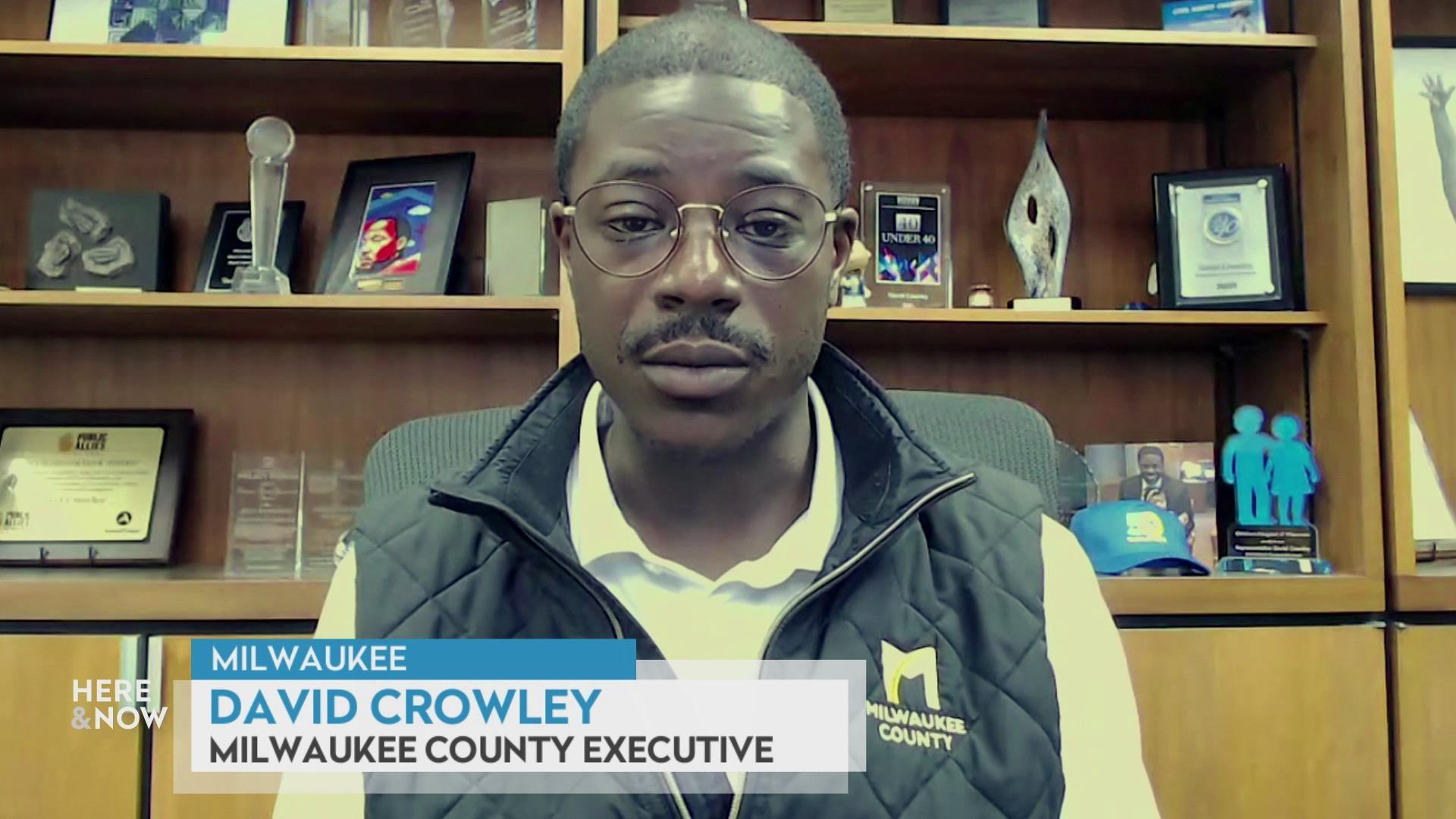

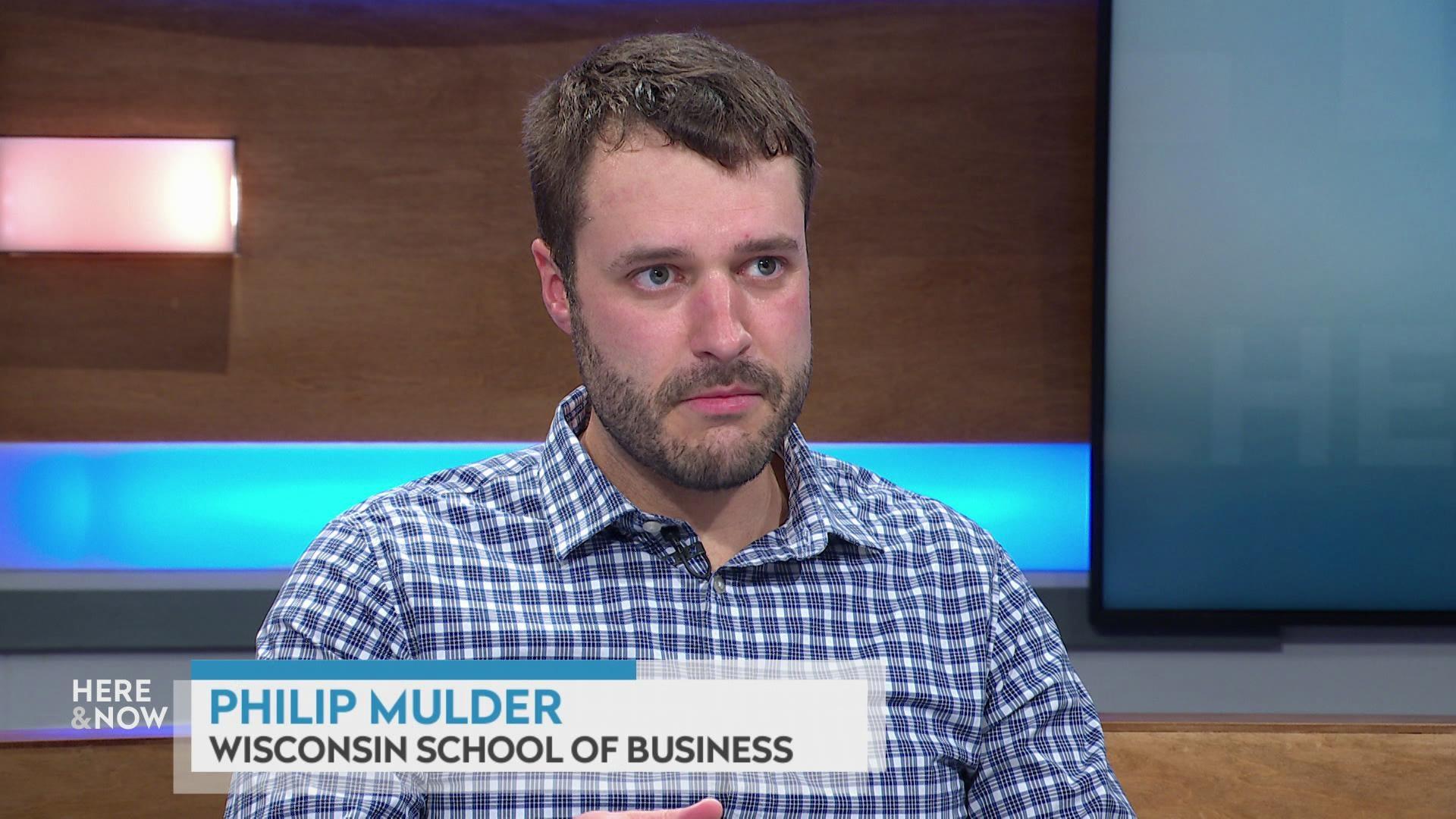
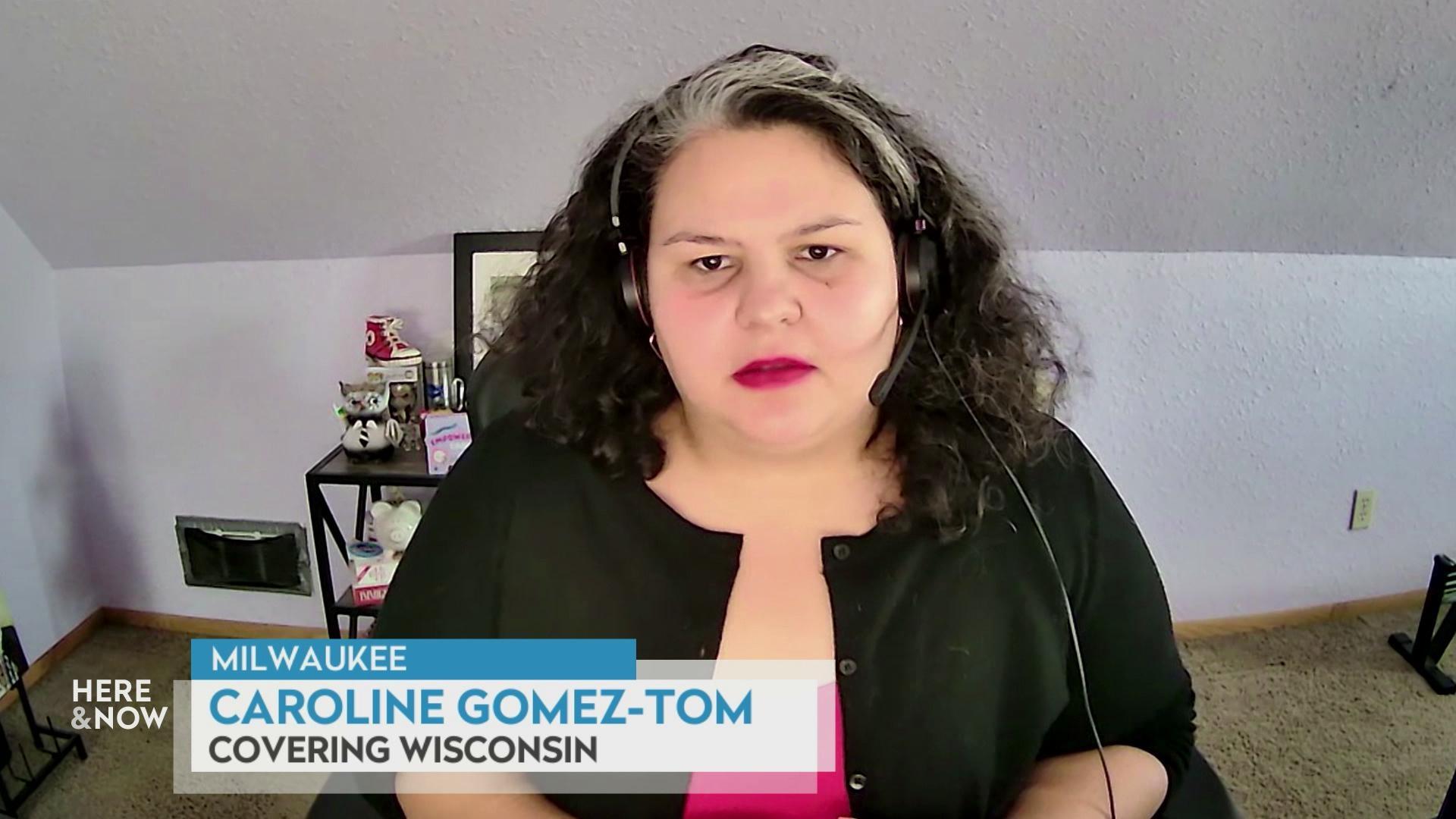
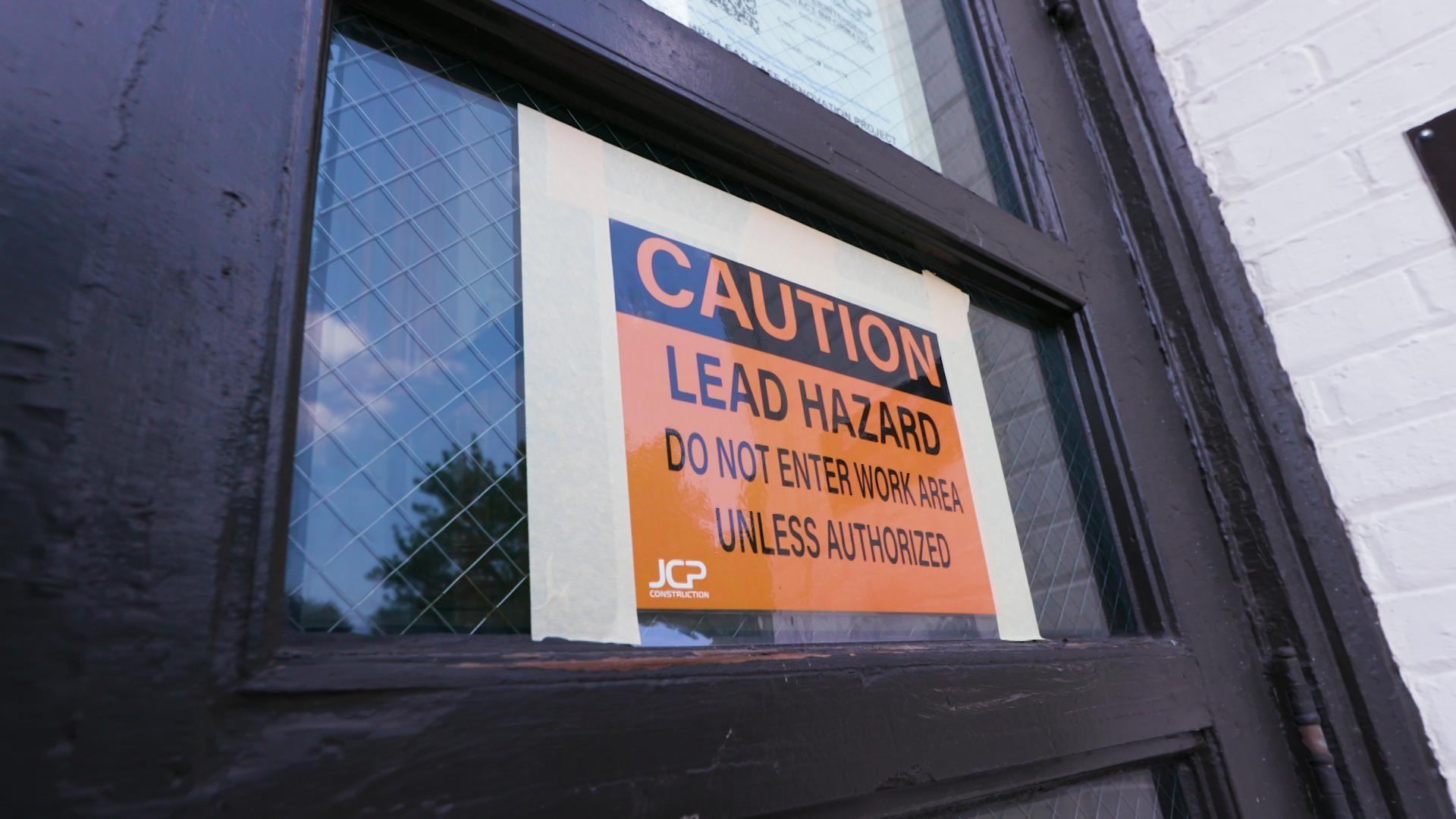

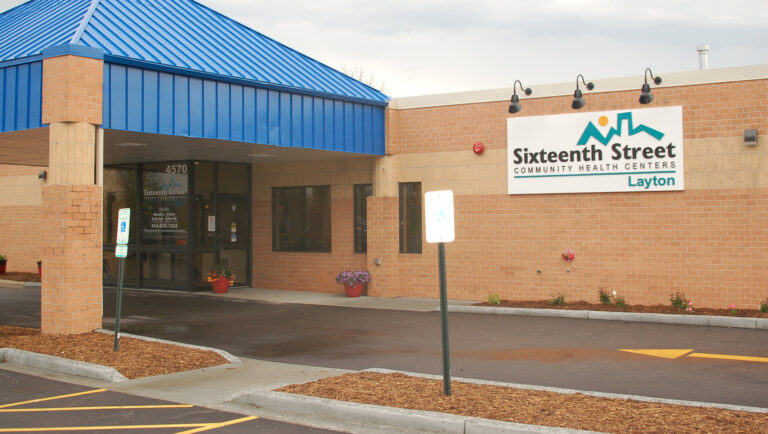



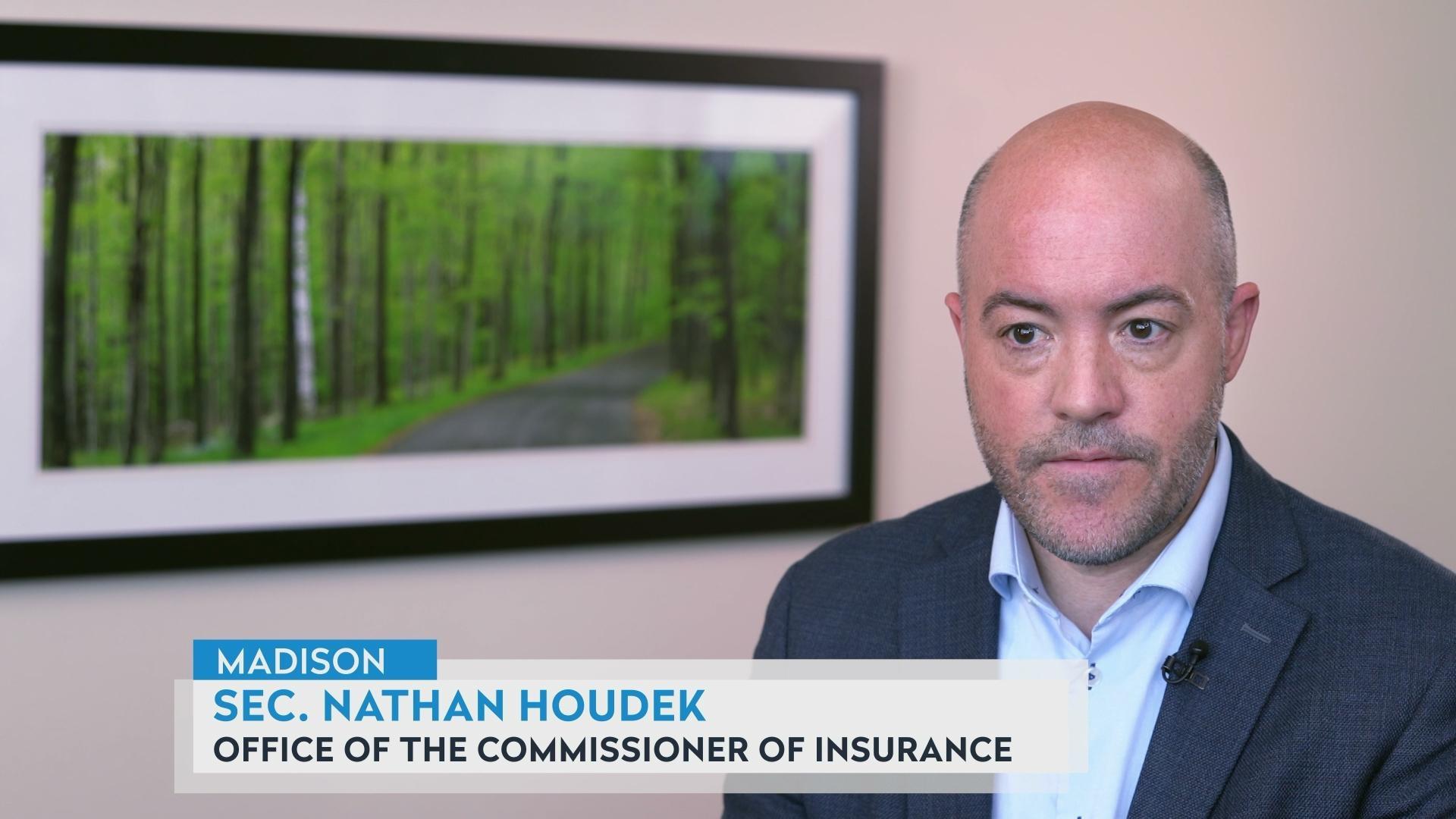


Follow Us